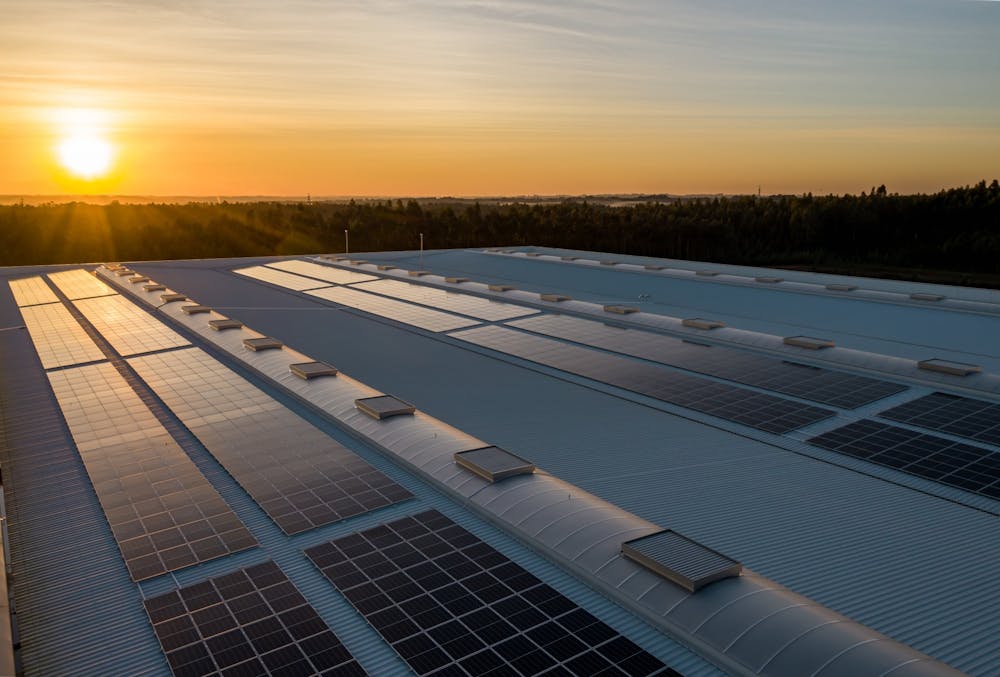More New Mexicans can now opt in to using renewable energy to power their homes after a year of rulemaking done by the Public Regulation Commission. The new Community Solar Rule, passed into law in April 2021 and adopted by the PRC on March 30, 2022, will mandate that 30% of the electricity produced by shared solar facilities be distributed to low-income communities and the organizations that support them.
Individuals who may benefit from this rule include those who qualify for Medicaid or food assistance programs. It also doesn’t limit solar energy options for those who rent the property they live on or for those who live in government-funded housing. Eligible service organizations may include places like homeless shelters or food pantries.
Dylan Connelly, director of commercial and community development at Affordable Solar and volunteer at the energy activism group 350 New Mexico, has been closely engaged with community solar and its implementation. He described how inaccessible solar energy currently is for New Mexicans.
“Only about 3 to 4% of homes in New Mexico have solar on their roofs. To put it on your roof is anywhere from $20(,000) to 40,000. You can finance it over time, but you have to have really good credit,” Connelly said.
Community solar means a wider variety of New Mexicans can take part in the energy transition process and the effort to stop using fossil fuels, not just those who are able to pay, according to Christopher Hall, who serves as Public Regulation Commissioner Joseph Maestas’ executive assistant.
“Just because they can’t afford to put it on their roof, or they don’t own their own home, should not be a barrier to entry to being able to participate in renewable energy,” Hall said.
In terms of what community solar actually looks like to those who will benefit from it, Connelly said low-income individuals might save up to $40 a month on their electric bill due to the legislative changes, though supply chain issues raising the cost of equipment may decrease the discount.
Community solar is a pilot program and is subject to change. Until it gets revisited in 2024, the energy output isn’t to exceed 200 megawatts, which Connelly said translates to about 40 solar facility development projects. Because there’s so many New Mexicans ready to go green, the PRC has devised a list to help them prioritize who will build and operate new solar facilities, according to Hall. One such priority includes services or businesses owned by vulnerable groups, such as women, veterans and Native Americans.
“Making sure that communities of color, low-income communities and Native American tribes are not left behind, I think that’s an important aspect of community solar,” Hall said.
Maestas described the passing of the Community Solar Act as “the end of a long legislative road.”
“It was very political, and the co-ops and investor-owned utilities were united in opposition of community solar,” Maestas said.
Investor-owned utilities are for-profit companies owned by shareholders. There are three IOUs operating in New Mexico: Public Service Company of New Mexico, El Paso Electric and Xcel Energy.
Get content from The Daily Lobo delivered to your inbox
Connelly attributes this opposition to the perceived potential threat that community solar projects pose to the utilities business model.
Despite the difficulty, the push for community solar was successful because of key participants. Both Connelly and Maestas praised legislator Liz Stefanics, D-N.M., who was instrumental in the regulatory process to allow community solar to come to fruition. Maestas also mentioned the efforts of Representative Patricia Roybal Caballero, D-N.M., and of advocates outside the government who worked behind the scenes on the issue.
Looking beyond the community solar victory, which should take effect starting in early June, according to Maestas, the shift toward green energy in New Mexico is on a distant timeline.
“The ultimate goal of the (Energy Transition Act), for investor-owned utilities, is to have 100% of their energy resources be carbon-free by 2045. Electric co-ops have to be carbon-free, with 80% renewable included in that, by 2050,” Maestas said.
In Connelly’s opinion, there’s not enough of an incentive for utilities to make the switch, and the transition to renewable energy isn’t moving fast enough.
“Climate change is a very odd thing for humans to have to combat, because there’s a deadline. Otherwise, the longer you wait, there’s exponential increase in suffering,” Connelly said.
Nell Johnson is a freelance reporter for the Daily Lobo. She can be reached at culture@dailylobo.com or on Twitter @peachnells






